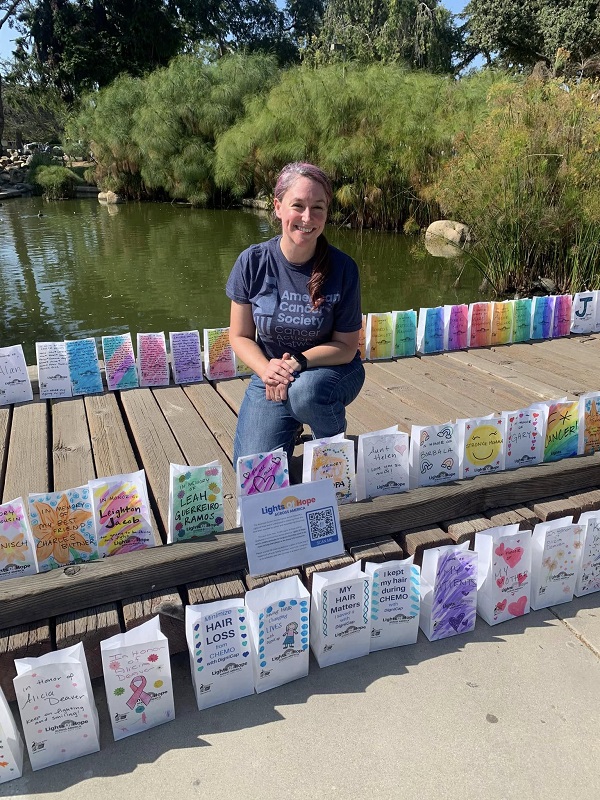
Slavery certainly does not exist in the United States the way it was portrayed in recent films such as 12 Years A Slave or Django Unchained, but bondage and human trafficking has taken on new forms since the end of the Civil War. The story of a woman who was the victim of human trafficking and endured three years of modern-day slavery in Beverly Hills was part of an in-depth discussion during a March 11 seminar at the Los Angeles World Affairs Council (LAWAC) headquarters in Culver City.
The evening talk, entitled “Modern-Day Slavery: A Discussion on Human Trafficking,” featured human trafficking survivor Ima Mathul and California Against Slavery founder and executive director Daphne Phung.
Phung provided a dose of reality for 20 minutes, explaining the prevalence of slavery today even though it is not necessarily visible.
Her points were made more profound by Mathul’s story. The Indonesia native explained how she was uprooted from her home in Southeast Asia with the promise of opportunity but was relegated to working 18 hours daily in a Beverly Hills home.
In 1997, when Mathul was 17 and living in Indonesia, she was offered a job as a nanny in the United States. The offer included a passport, free plane ticket, and $150 per month income. Accepting the offer, Mathul left her home in Indonesia and made way to the United States with a cousin.
Upon arriving at LAX Airport, Mathul met with a female handler, who immediately confiscated the passport and drove her to a home where she would learn how to be a nanny.
Staying at the home for a week, Mathul said she was trained how to be a housekeeper, learning about various cleaning products such as bleach, cleansers, sprays, etc. Mathul pointed out chemical-based cleaning products were not used in Indonesia when she lived there.
After the week of training, Mathul was separated from her cousin and taken to the home where she would work.
“In the beginning the work was okay. It wasn’t hard. I was just helping with the cooking and I didn’t have to clean much because, at that time, they had someone who helped keep the house clean once a week,” Mathul said. “But after a while, that person didn’t come anymore and I started to a lot more work around the house, including cleaning, cooking, laundry, washing the car, gardening, and [other housework].”
Mathul said she was promised one day off per week so she could visit her cousin, but that promise was never honored.
“I did not get paid for the work that I did,” she added. “I was working for that family for three years. I was physically and verbally abused almost everyday. I have bruises and marks all over my face and my head.”

Mathul recalled being hit in the head by her trafficker and told to make up a story of how she had an accident while working in the backyard.
“I wasn’t chained to anything. I wasn’t living in the basement. I was living in the house like a normal nanny. But I was psychologically chained,” Mathul said, adding she was always threatened to be arrested.
Though she was allowed to walk around the neighborhood and went to church weekly with the family, planning an escape of any sort was no easy task. With limited understanding of the English language, no friends in a foreign land, and no income to speak of, Mathul believed she was stuck with no way out.
“As a foreigner coming to this country, we know nothing about the laws. We do not know there are people out there, an organization out there who can help us,” Mathul said.
Finally, after three years had passed, Mathul said she could not go on living as she did and decided to send a letter to the neighbors explaining her situation.
“It took me a while to build that courage to write a letter to the neighbor,” Mathul said. “I didn’t know how to write in English. “It took me many more months to build the courage to give that letter to the neighbor. I was afraid that what happened if the neighbor will tell my trafficker.”
Thankfully, the neighbor helped arrange for Mathul’s escape and soon connected with the non-profit group Coalition to Abolish Slavery and Trafficking (CAST). The group helped her try to build a case against her trafficker.
Unfortunately, the case did not make it very far, but CAST helped Mathul recuperate as a survivor. She now regularly makes public appearances and advocates against modern-day slavery.
Mathul’s story drove home two of Phung’s points: slavery still exists; and, the victims are women and children, two groups society often considers “vulnerable.”
“Slavery never ended. It just evolved,” Phung said.
She added modern slavery differs from how it was in the 1800s and earlier, when it was men who were predominately bonded into labor, whereas today’s slave laborers are women and young children.
Phung stated it is difficult to quantify the exact number of people who are modern-day slaves, though various studies peg the number between 12 million and 30 million, she stated.
Among the statistics Phung cited: modern-day slavery is a $32 billion industry, second largest in the world behind the drug trade and comparable to the weapons trade. She also stated two million children exploited annually in the global commercial sex trade.
What is the profile of the culprits? According to Phung, it is usually people from within the same community as the victims.
“They know the language. They know what the vulnerabilities are,” she said. “Women play a larger role as perpetrators.”
In terms of why modern-day slavery is difficult to address, part of the issue is how it has been classified. For example, human trafficking might be classified as a violation of labor laws. Accordingly, a state entity might address the situation as a standard labor matter instead of as a human rights violation, Phung stated.

According to the Polaris Project, federal law human trafficking victims “include children involved in the sex trade, adults age 18 or over who are coerced or deceived into commercial sex acts, and anyone forced into different forms of ‘labor or services,’ such as domestic workers held in a home, or farm-workers forced to labor against their will.”
The Trafficking Victims Protection Act (TVPA) of 2000 was approved by Congress to protect against submission or coercion into any form of forced servitude or slavery.
Specifically, the TVPA prohibits “the recruitment, harboring, transportation, provision, or obtaining of a person for labor or services, through the use of force, fraud or coercion for the purpose of subjection to involuntary servitude, peonage, debt bondage or slavery.”
Labor trafficking, which Mathul was a victim of, can be found in homes, on factories or farms, at strip clubs, through peddling and begging rings, and within hotels, restaurants, or other hospitality and service industries.
The website www.antislavery.org cites an International Labor Organization statistic estimating 20.9 million people currently live in slavery.
A CNN Freedom Project blog post discussed a 2012 Polaris Project study analyzing anti-trafficking laws in each of the 50 United States.
Massachusetts, Ohio, South Carolina, and West Virginia had strong anti-trafficking laws on the books, while Arkansas, Montana, South Dakota, and Wyoming, according to the CNN blog, exerted “a minimal effort to enact human trafficking legislation.”
The CNN blog post added 49 states plus the District of Columbia had some form of anti-trafficking laws on the books as of 2012.
More information about LAWAC, including its mission and upcoming events, can be found on its website at www.lawac.org.





















